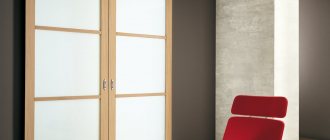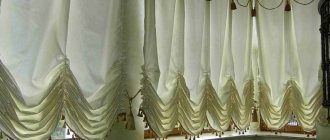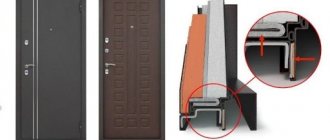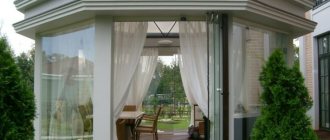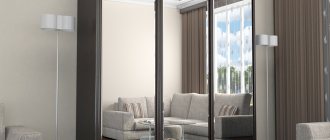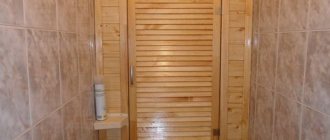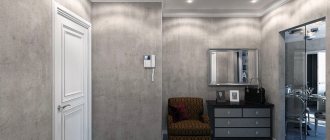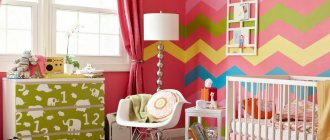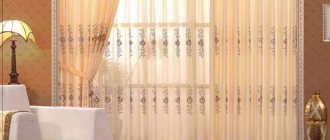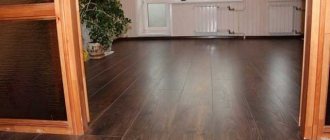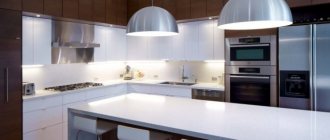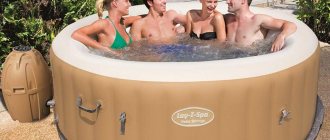Advantages and disadvantages
The choice of sliding doors for a dressing room is determined both by the layout and design of the room, and by functionality. This option has several advantages:
- Sliding doors to the dressing room will be a good choice when there is a shortage of free usable space. They do not take up space when open, like casement options and are perfect for narrow corridors or small compact rooms;
- variations of facade designs presented by manufacturers of this furniture segment will amaze even the most sophisticated designers;
- such doors do not slam shut in strong drafts - they will be safer for small children. It is more difficult for small children to open the sliding door for the dressing room, so this is another plus in terms of safety.
The main disadvantages of coupe models are their complex design, as well as the need for careful use. We can highlight the main disadvantages, knowledge of which will help to avoid mistakes when choosing them:
- The sliding sliding door for the dressing room allows air to easily pass through, and therefore odors. When installing a dressing room near the kitchen, take care of high-quality insulation;
- The short service life of working mechanisms can cause frequent repairs. You can avoid such problems by carefully choosing all the equipment of your wardrobe elements;
- the fragility of the structure can fail at the wrong moment. A guest who mistook the sliding façade for a hinged one will easily disable it with a strong pull towards himself.
- the inability to be open to everyone at once prevents the full width of the doorway from being used.
Despite the type of panels chosen to close the interior space of the dressing room from the main room, you should carefully select their components and handle them with care, even if they are declared to be the most durable.
How to choose sliding doors for a wardrobe?
The main task of the dressing room is the optimal organization and storage of things (clothes, shoes, accessories, decor and household items). In such premises, all conditions are created for the location of the required number of storage systems, no matter in what form they are implemented. Simply put, a sliding room is a spacious wardrobe.
Thematic zoning of a room and the allocation of free space for this purpose is carried out in two ways: providing a separate room or delimiting the space using sliding structures. If you adhere to the first method, then you are unlikely to need to purchase and subsequently install compartment doors. As for the second option, you simply cannot do without massive double-leaf models.
Large sliding structures are often called portal systems. With their help, part of the room is fenced off and transformed into a convenient wardrobe with all the necessary attributes.
Today, stores offer a wide variety of sliding door options made of wood, glass, steel, special panels and other materials. You can also choose a color scheme that matches your interior and place an order for individual design.
The most versatile are compartment doors made of MDF, natural wood or tempered glass. They are distinguished by high strength, long service life and exquisite appearance. Models made of aluminum profiles have similar characteristics - these types of specimens look especially impressive in high-tech rooms.
Sliding doors with a grip produce no less effect. This design can be made from a variety of materials, but its distinctive feature is the absence of fingerprints on the mirror surface.
An excellent addition would be decorative inserts made of artificial leather, wood, laminate or veneer profile.
Additional tips for choosing sliding doors:
- In specialized stores, consult with employees and study the features of a particular fitting. The durability and ease of maintenance of this mechanism depend on the quality of the manufacturing material.
- Particularly popular among Russian citizens are models with metal bearings and aluminum guides. If you need to install a lock, select versions designed specifically for doors of this modification.
- When purchasing a sliding door, read the delivery rules: find out whether the product has a warranty and for how long, and whether the store provides free transportation and installation.
On video: design and features of a sliding compartment door.
Material of manufacture
The most classic example of the design of sliding doors is the use of natural or artificial wood as the main material. Such compartment doors are most often made from chipboard or MDF and are combined with all sorts of colors. Wooden doors can be complemented with glass or leather inserts.
Mirror and glass compartment doors are made from high-strength glass and are attached like a wooden panel. The back side of the glass is covered with a protective film - this is necessary in case of damage to the panels. In the photo you can see an option for organizing a wardrobe in the bedroom using frosted glass doors and more.
Related article: How to make a dressing room from a closet: arrangement ideas |+50 photos
Also on the market are models with glossy and multi-colored glasses. A special feature of using such structures is the possibility of applying additional decor.
Features of accommodation
When organizing small cabinets, a special niche is created or sliding doors are installed in the doorway using the example of interior doors. Depending on the available space, an entire room or section of the room is allocated for a dressing room. To zone space when there is a lack of free space, mirrors are used, as well as various decorative elements as a complement to the design of sliding doors.
Sliding panels can become the basis for forming a partition into a small dressing room. However, the chosen model for placing sliding doors depends on a whole list of requirements, the main of which are the functional features of the room and the personal preferences of the owner of the house.
If there is a need to expand the space, then the ideal option would be to create a single panel of mirrors covering the entire wall.
Kinds
The range of wardrobe facades offered by manufacturers is large enough to be applied to any wardrobe rooms and any room layouts. There is a basic range of design solutions based on supporting sliding mechanisms or suspended sliding mechanisms:
- bottom support structures include several main types of sliding structures. This includes the most popular sliding wardrobe doors. The main feature of this type is the load on the lower support rail or support rollers. The upper part of the entire mechanism serves as a guide. Typically the lower part is made of steel or aluminum. Aluminum is stronger and more durable than steel, but costs more. Bottom rails are either mortise or overhead. The first ones are technically more difficult to make, but they look better, and they also allow the door to go down close to the floor. The lower guide rail often becomes clogged and creates noise during operation;
- suspended structures are more modern and more reliable. The top profile is wide and massive, which helps it withstand heavy loads. A special stabilization system prevents the doors from swinging too much and prevents them from falling. Hanging structures require a strong frame, so they are often installed on partially built-in wardrobes.
Bottom support system Suspension system
In addition to the structural diversity, sliding doors are divided into the following types:
- wardrobe compartment - a conventional bottom-support sliding system;
- a pencil case is a structure that hides in the walls when opened. It is not suitable for installing a dressing room in a niche;
- book - similar in appearance to a swing door, but opens by folding in half;
- accordion - a solid door similar to a screen. It looks like a book door, but has more doors;
- There are frameless sliding systems - these are glass modules that do not have a clear frame, and the working mechanisms are attached directly to the panel.
Frameless Pencil Case Accordion
Coupe
Sliding doors to the dressing room: types of designs
Today, there are a large number of design options for sliding doors, each of which has its own characteristics. Therefore, the choice of one design or another depends only on the architecture of the home and the taste preferences of the owners.
Pencil doors
This is the most compact version of sliding doors, the peculiarity of which is that the opening doors go into a special niche in the wall, completely disappearing inside it. This version of sliding doors is suitable for any room, but it will look most appropriate in a small room where you need to save space.
Sliding doors
Sliding sliding doors for a dressing room work on the same principle as in sliding wardrobes. The door leaves move on rails and can either fit into a niche in the wall or simply open to the sides. The advantage of this design is a large number of fittings and high reliability of the design.
Techno door
The techno door is similar in opening principle to compartment doors, but the opening mechanism is attached only to the top, which allows the door to seem to float in the air. Doors of this design will fit perfectly into a modern interior, where there is a flat, smooth floor without thresholds throughout the home.
Book door
This is a very original version of doors that requires a little more space. Such doors fold when opened, which is similar in principle to a conventional screen.
Harmonic
The accordion door is similar in principle to the book door, however, it differs in smaller panels. When folded, such doors resemble an accordion, which gives these doors their name.
Roto door
The sliding door is the most innovative type of sliding door. A special feature of this design is the ability to open in different directions. However, in addition to its chic appearance, the door also has a drawback - it is similar in size to a regular door.
Radius doors
Radius sliding doors for dressing rooms are a new product on the door systems market. They have smooth corners and smooth shapes, and can also be made with different curvatures. Doors of this design are ideal in cases where the dressing room is not a separate room, but in the corner of a room or corridor.
Manufacturing materials
Today, the main materials used for the manufacture of sliding wardrobe doors are wood, MDF boards, metal, glass, plastic, and combined materials. Natural wood is used when installing accordion doors, pencil cases and books. This material goes well with a classic interior, emphasizing the high status of the owner of the house. This is an environmentally friendly, reliable material, but it is quite expensive. Most often oak is used for these purposes.
MDF is the most common and has established itself as an inexpensive and versatile material. MDF boards are amenable to shaped processing of any complexity, which allows you to create doors of any shape and style.
Glass and mirror doors are designed to visually increase the space of the room. They are suitable for modern and high-tech styles. The peculiarity of such doors of dressing rooms is that, without entering the dressing room, you can see its contents. The doors are also supplied with frosted glass, decorated glass, patterned glass, glossy glass and structured glass.
Combining materials allows you to adjust the final result to the specific needs of the customer. Combinations can be varied: plastic with metal, glass with MDF or wood, glass and plastic, mirror panels with frosted glass.
The working mechanisms are made of steel and aluminum. Steel systems are cheaper than aluminum ones, but they are fragile and quickly fail. The reason for this is often the small thickness of the canvas. Thin rails of lower support systems quickly deform. Aluminum systems will last longer, although they are much more expensive than steel ones. What is certain is that any system, regardless of its cost, will last a long time if handled with care.
Working door systems are equipped with rollers or bearing mechanisms. Often the standard equipment is equipped with roller elements that do not have bearings, but they can be replaced with higher-quality parts for compartment doors to the dressing room with your own hands.
MDF
Mirror chipboards
Wooden
Glass
pros
Why are modern housewives so attracted to sliding structures? It's simple, they have a number of advantages over standard doors:
- Saving space. By installing a sliding door, you will not have to worry about whether there is enough space around for it to open. The doors will move in different directions and will not extend beyond the opening;
- Safety. Those who have small children understand this perfectly. The baby will not be able to stick his finger between the door and the opening and pinch it. In addition, the sliding doors will not slam shut even in a strong draft;
- Easy installation process. With a small set of tools and some simple skills, you can install sliding doors in your dressing room yourself. There will be no need to change the opening, since you can order a sliding door exactly the size you need. If any element fails, you can easily select a new part;
- Decorative. In addition to the practical function, which sliding doors cope with with a bang, they perform an aesthetic function. A variety of designs, a wide range of materials and a rich palette of colors allow you to make the door an important part of the interior.
Sliding door saves extra space
Sliding door for dressing room
Glass sliding door
Decoration
Decorating sliding wardrobe doors is a creative and time-consuming process. Before you learn how to make it yourself, you should familiarize yourself with all the possible options, because a wardrobe with sliding doors can be decorated in various ways. Decorating glass doors or doors with glass inserts is considered common. Also popular is photo printing on plastic or chipboard panels. We invite you to find out how to make your dressing room even more attractive:
- Designs are applied to glass and mirror sliding wardrobe doors in a variety of ways. Sandblasting remains the most popular method in glass decoration. Using an air-sand jet, you can make the glass matte, apply a pattern or design on it;
- beveled glass elements are applied to glass wardrobe doors and are designed to enhance the furniture with their elaborate shapes. They are made mainly to order, so they have exclusive shapes and unique designs;
- photo printing is gradually replacing glass processing. If you want to replace one pattern with another, or change the color of the door, it does not require replacing the entire panel. This applies to photographs printed on film. Photo printing conveys colors better, and it can be used to decorate glass, plastic, leather and other materials. You just have to select an image, and a large-format printer will recreate it on film and you can decorate any compartment door for a dressing room. Photos can be seen in the selection;
- Contour stained glass is the most popular type of stained glass. Filled stained glass windows, as they are also called, are made by hand, so each one is unique and exclusive. This also affects the quality of the result, as can be seen from the high clarity and richness of the drawings;
- artistic painting is another type of stained glass painting. This is a labor-intensive process that requires a highly qualified artist. The uniqueness of hand-painting technology lies in the fact that the design is applied from the inside in layers. The first layer serves as the outside foreground, and all subsequent layers are the background of the image;
- Film stained glass is a quick way to create stained glass on a cabinet door. The method of making such stained glass consists of gluing layers of film that imitates glass. After this, lead tape is glued to the joints. This method is gaining popularity due to its simplicity and speed of implementation;
- Ion plasma sputtering is a high-tech, sophisticated and beautiful method of decorating a glass or mirror surface. Ion plasma stained glass is a fairly expensive method of painting on glass, but the result of this method exceeds all expectations;
- the sliding facade of the dressing room can be airbrushed; the door can also be made in such a way that it will be decorated with a mirror;
- The combination method will allow you to create a glass mosaic on the doors. Often large pattern elements are created in the form of simple geometric shapes.
Despite the complexity of decorating, you can do an upgrade for your dressing room with your own hands, you just need to show a little creativity in this matter.
Materials, decor and additional functions of sliding doors
Various materials are used to make sliding doors. It can be valuable types of wood, glass or mirror, plastic, chipboard, etc. When choosing a model, many owners are guided not only by the quality of the material, but also by its decorative properties, which allow them to brighten up the room, and sometimes even hide a number of its shortcomings.
- Wooden doors. For special chic, you can use wood from expensive tree species, however, today chipboard or MDF are more often used. This material is lighter not only in weight, but also in processing. It goes well with glass, mirror and plastic and allows you to achieve a decent result for a reasonable amount;
- Models made of glass and mirror. If wooden doors give solidity and are used, as a rule, in classic interiors, then the main function of glass and mirror sliding doors in a wardrobe is to visually expand the space. Sliding doors use durable glass. The drawing is applied to them using various technologies. This can be sandblasting glass, film or UV printing, stained glass. In some cases, even the fusing technique (sintered glass) is used. Classic turns are not used due to their significant weight and fragility;
- Doors made of rattan and bamboo. If you are a supporter of eco-style, wicker wardrobe doors will fit perfectly into the interior of your home. These models look elegant, but are incredibly durable.
Sliding doors made of wood
Sliding doors with mirror surface
Wooden door-techno
Care and operation
Of course, every furniture, regardless of its cost and class, needs proper care and compliance with operating rules. Sliding doors for the dressing room are equipped with working mechanisms that are constantly subject to loads. We will tell you how to avoid the serious consequences of improper use of such furniture.
Wooden wardrobe doors and doors made of chipboard are afraid of too humid air and at the same time drying out. It is optimal to use such doors at temperatures no higher than 45 degrees Celsius. Air humidity should be between 55-75 percent. Otherwise, cabinet doors made of such material may become deformed. You should not place heaters near the doors of the dressing room. Wipe off dust on a wooden surface only with a well-wrung out microfiber cloth. In addition, you need to control the level of overload on the shelves and hangers of the closet to avoid breakdowns.
Guide profiles and roller systems of door support elements are responsible for their normal movement within a given trajectory. Profiles of lower support systems mounted into the floor require special care. Such profiles become clogged and require regular cleaning. Otherwise, rollers of any quality will quickly break. If necessary, all moving mechanisms of sliding facades must be lubricated.
A careless attitude towards such mechanisms will sooner or later lead to their breakdown, which can affect the family budget, since replacing such parts is not cheap.
You need to take care of the surface of the doors with care; if stains have formed on the furniture, they need to be removed with a weak soap solution, which is wiped dry with a clean rag. Mirrored sliding doors for a dressing room should only be washed with mirror products, not glass products. Otherwise, surface clouding may occur. It is worth remembering that no matter how expensive your furniture or its equipment is, with sliding structures or others, it requires absolutely the same care.
Selection by material
Depending on the characteristics of the material, the complexity of maintenance and service life of sliding doors are determined. Therefore, before choosing a specific model, you need to consider all its pros and cons. Also, do not forget about the influence of the appearance of the construction raw materials on the design of the room being furnished. As for the practicality of materials, consider the following conditions when selecting models:
- In the dressing room, the entrance to which is located in the hallway, you should install doors made of easy-to-clean materials. Dust will constantly accumulate on glossy surfaces.
- The weight of the material directly affects the need to install a complex, highly durable or lightweight, simple system for fastening and moving the sashes.
- The selected material, both in color and presentation, should fit into the interior of the bedroom or hallway. Otherwise, it will simply not be possible to maintain the overall style of the existing furnishings and the element being installed.
Wooden
Sliding doors made of wood and derived raw materials (for example, with veneer finishing) are considered classics. They will suit different designs. The most popular are sliding or sliding (accordion) models, complemented by thin frames around the perimeter of the canvas. There are also types whose canvases are supplemented with wooden slats (similar to ordinary blinds) and a wooden lattice. True, they should only be installed in bedrooms. The location of such doors in the hallway will allow dust to directly enter the dressing room. As for the design, painted models are most often used. Products coated with varnish are more suitable for installation in rooms with natural finishes. Dark wood will complement the strict classic design well.
Wooden doors are quite heavy, so they require the installation of a strong framing system and the strongest possible profiles.
Glass and mirror
Mirrored panels of sliding doors allow you to visually increase the area of the room in which they are installed. Translucent glass models will add lightness to the interior. Mirror surfaces can easily fit into both classic and unusual interiors. But translucent glass inserts will be an ideal complement to any of the modern trends. Such glasses are produced in any colors. Due to special production technology, they have increased wear resistance and reliability. It is extremely difficult to damage such a canvas. Mirror and glass panels in coupe and folding models can be combined with other materials. For example, in similar models from Ikea, glass is usually combined with plastic inserts or veneer sheets. Mirrored doors can be complemented with sandblasted patterns, and mirror or glass inserts can be separated horizontally by thin wooden or aluminum strips.
Plastic
Plastic wardrobe doors will look good in both a discreet, cozy or bright interior. Plastic inserts used for canvases are produced in a variety of shades. They can be completely opaque or translucent. The plastic on wardrobe doors is made from durable and wear-resistant polymers. This material is not afraid of the negative effects of the sun. Due to special toners, they are resistant to fading or yellowing. Plastic doors may have a matte surface. But to add dynamism to the interior, it is recommended to choose models with gloss. Typically, plastic inserts are separated into separate pieces by horizontal strips. Even with a small door width, they can visually expand the room. To visually raise the ceiling, you should select canvases with solid pieces of plastic.
Bamboo or rattan
Unusual sliding doors made of rattan or bamboo can enhance home comfort. They can be produced in any design, which greatly simplifies the selection of original models. True, the price of such systems is quite high. Natural raw materials will create a special climate in the room being equipped. Additionally, they will be able to emphasize the non-standard interior design. It is recommended to choose such doors for installation in dressing rooms (or mini-wardrobes, reminiscent of a spacious closet) in bedrooms. In hallways, a large amount of dust will collect on the embossed surface of the doors, which will lead to the need for constant cleaning.
Sliding doors made of bamboo or rattan are more suitable for loft, Scandinavian, modern or urban style. In the classical direction, Art Deco or Provence, they will look out of place.
Photo
How to install sliding doors with your own hands: work procedure
Installing the Top Rail
- Based on the measurements of the opening, we determine the size and number of leaves for the compartment doors. At the same time, we take into account the filling, frame and elements of the sliding mechanism. It will be best if you prepare the appropriate drawings.
- We assemble the door frame with our own hands and insert the filling, securely fastening all the elements.
- We attach the working mechanism to the sliding sashes, namely rollers, clamps, etc.
- We set the sliding doors aside and proceed to attach the top rail. To do this you will need a hammer drill, a screwdriver, dowels, and self-tapping screws.
- Now you need to determine where to install the bottom rail. To do this, place it on the floor at the intended mounting location. We take one door and insert it into the upper guide, then into the lower one. Using a level, we check the verticality of the door leaf and, if necessary, move the rail. When we are satisfied with the result, we mark the place where it is attached and remove the door. Now you can fasten the rail with self-tapping screws to the floor.
- Once both tracks are attached, the sliding doors can be inserted.
After completing all stages, the design is ready for use. You can equip your dressing room with all the necessary shelves and hangers, and then use it and enjoy it.
